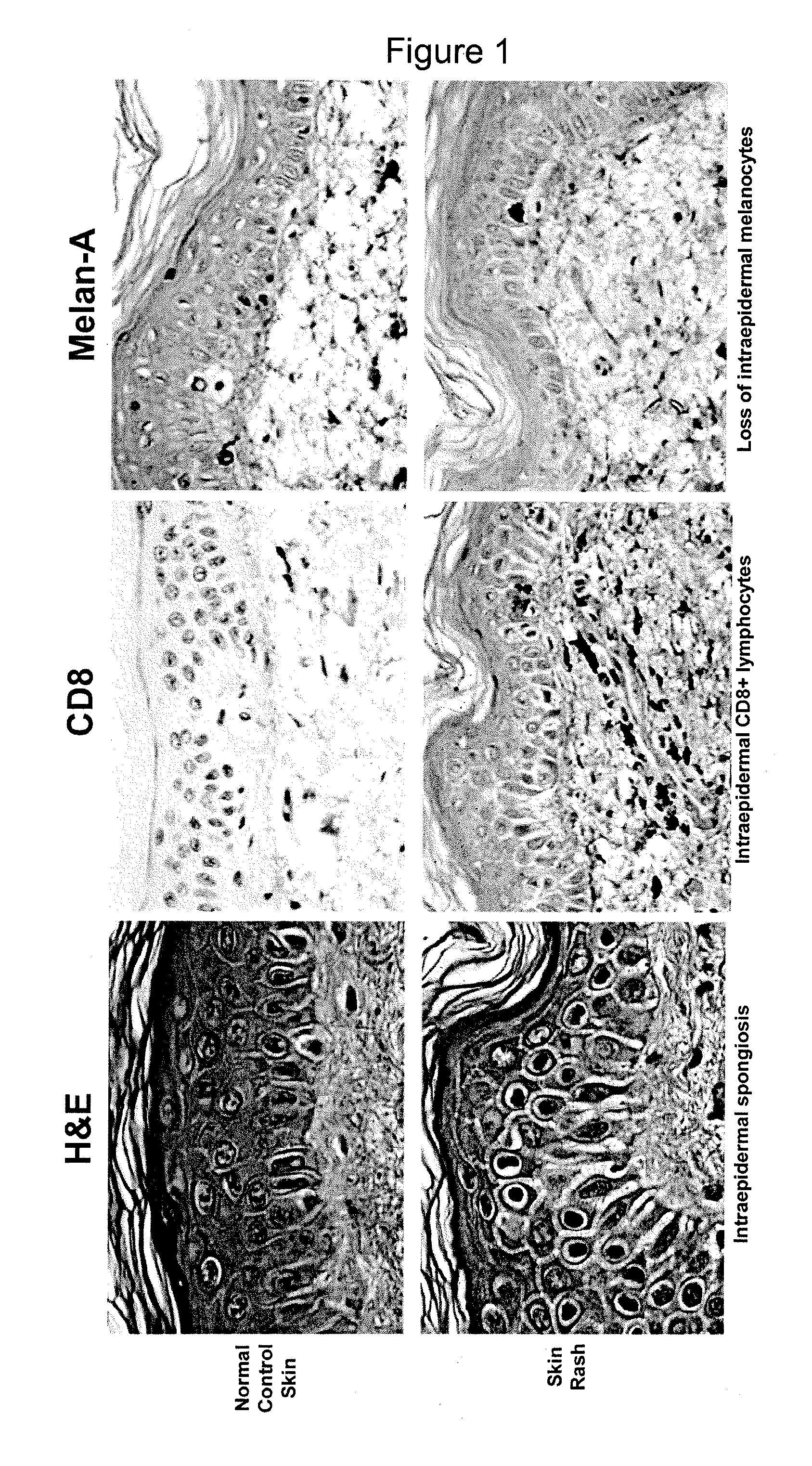Methods of identifying central memory t cells and obtaining antigen-specific t cell populations
- Summary
- Abstract
- Description
- Claims
- Application Information
AI Technical Summary
Benefits of technology
Problems solved by technology
Method used
Image
Examples
example 1
[0085]This example demonstrates that the IL-2 index correlates with a central memory phenotype of gp100154-162 specific CD8+ T cells.
[0086]To better understand the quantitative relationship between IFN-g and IL-2 mRNA production from human tumor specific CD8+ T cells, early gp100 (154-162) (SEQ ID NO: 2) sensitized human PBMC microcultures were analyzed for the synchronous production of IFN-g and IL-2 mRNA after a 3 hour exposure to the sensitizing peptide. 192 individual short-term sensitized microcultures established from a single patient with metastatic melanoma were screened. Nine cultures (4.7%) of 192 demonstrated significant antigen specific reactivity as evident from the production of either IFN-g or IL-2 mRNA when compared to control reactivity.
[0087]Analysis of the co-expression of these cytokines revealed that six of these cultures produced only IFN-g while three cultures produced significant quantities of both IFN-g and IL-2 mRNA. There were no cultures that exclusively ...
example 2
[0095]This example demonstrates the use of the IL-2 index to identify tumor-specific, central memory CD8+ T cells from multiple melanoma patients.
[0096]To determine if the IL-2 index could be used to specifically identify tumor specific central memory CD8+ T cells from multiple patients, early PBMC microcultures from four individual melanoma patients were prospectively analyzed using this measure. PBMC from 4 melanoma patients underwent in vitro sensitization for 14 days with gp100(154) peptide (SEQ ID NO: 2). The microwells from these 4 independent patients were screened for reactivity against T2 pulsed targets. Relative IFNγ and IL-2 mRNA were determined for each well. The IL-2 indices were calculated. A sample of the same well underwent staining with gp100(154) tetramer and CD62L to determine phenotype. From each of these patients, paired microcultures with dichotomous IL-2 indices were identified and then assessed for the frequency and phenotype of gp100 tetramer positive cells ...
example 3
[0099]This example demonstrates that cultures with a high IL-2 index (≧10) can prospectively identify antigen specific CD8+ T cells having higher proliferative capacity than cultures with a low IL-2 index (<10).
[0100]It was next determined whether the magnitude of the IL-2 index correlated with the in vitro proliferative capacity of gp100 specific CD8+ T cells. From each of three melanoma patients, paired microcultures with dichotomous IL-2 indices (≧10 and <10) were separately exposed to anti-CD3 antibody, interleukin-2 and autologous irradiated PBMC to induce a rapid polyclonal expansion. At day 12, the expanded paired cultures underwent FACS analysis to determine the frequency and absolute cell count of tetramer+ / CD8+ T cells. After the polyclonal expansion, culture A (IL-2 index: 0.8) showed a significant decrease in tetramer+ / CD8+ frequency from 23% to 0.2%. In contrast, culture B (IL-2 index: 120) showed relative maintenance of the frequency (6% to 4%).
[0101]Absolute cell coun...
PUM
| Property | Measurement | Unit |
|---|---|---|
| Fraction | aaaaa | aaaaa |
| Fraction | aaaaa | aaaaa |
| Fraction | aaaaa | aaaaa |
Abstract
Description
Claims
Application Information
 Login to View More
Login to View More - R&D
- Intellectual Property
- Life Sciences
- Materials
- Tech Scout
- Unparalleled Data Quality
- Higher Quality Content
- 60% Fewer Hallucinations
Browse by: Latest US Patents, China's latest patents, Technical Efficacy Thesaurus, Application Domain, Technology Topic, Popular Technical Reports.
© 2025 PatSnap. All rights reserved.Legal|Privacy policy|Modern Slavery Act Transparency Statement|Sitemap|About US| Contact US: help@patsnap.com

